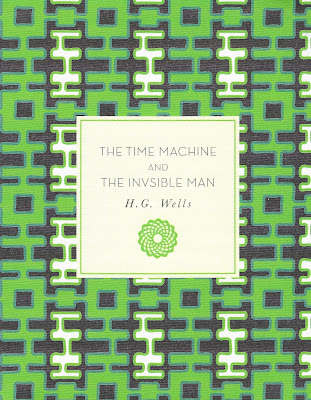This is a classic science fiction novella about a man who discovers how to turn himself invisible and decides to do it, thinking that his invisibility will give him an advantage over people. In reality, he discovers that it makes his life both uncomfortable and problematic.
It is difficult to describe my reaction to reading The Invisible Man. For one thing, I had seen the 1933 film adaptation at least once before, thus I had that story in my mind when reading the book. That film differs from the book significantly. Had I come to the book with no preconceived notions, that might have made a difference. Secondly, the story is very brief, about 155 pages in the edition I read. Thus I find it hard to tell about the story without revealing too much.

Once I got about half way into the story, I realized that it was much simpler and more focused than the movie version. A stranger comes to the Coach and Horses in Iping and seeks a room and a sitting room where he can set up a lab to work in. He is bundled up in a strange way, only his nose can be seen, and he seems peculiar and cantankerous. As he has arrived in the winter when they have few guests, the husband and wife who run the place are glad of the money, until they find out how disruptive his presence can be. Even then, they put up with him for months because he continues to pay his bills.
Eventually the stranger runs out of money and gets thrown out of his room. He resists, and in the course of an altercation he removes his clothes and they realize that he is invisible. They try to keep him there, but he escapes. And the reader begins to realize that the invisible man is not just a man in trouble, looking for a solution to his strange state, but that he has no concern for others, for their safety or their feelings. He is quite willing to endanger or harm people to get what he wants.
The rest of the story is concerned with revealing how the invisible man got that way, how it has affected him, and his plans for his future. He serendipitously runs into an old friend from medical school and enlists his help.
Personally, I found this book to be a disappointment, but I cannot describe the things that led to that opinion without telling more than I want to reveal about the story. I was interested while reading it and I thought the writing was fine, but I wanted a more exciting or meaningful story, and it did not impress me in that way. The book is a classic and definitely worth reading but it was not a story I cared much for. However, I want to stress that many readers have enjoyed the story much more than I did.
The story is told in third person, and I think this reader might have had some sympathy for the main character it it had been in first person and told in a more personal way.
I think this book is more about issues but somehow that did not work for me. Kate at crossexaminingcrime wrote an excellent in-depth review of the book, discussing the various ideas that can be found in this work. Please see her review.
A few days after I read the book we watched the 1933 film adaptation of The Invisible Man again. It was directed by James Whale, and Claude Rains made his American film debut as the invisible man. Gloria Stuart played the love interest, a role that does not exist in the book. I can understand why it was decided to provide more of a backstory for the invisible man in the film. The early part of the book is condensed quite a bit in the film, and that is also understandable. The filmmakers used groundbreaking special effects in making a story in which the main character is never seen.
I read this for Classics Week in the Novellas in November 2021 reading event. The host blogs are 746 Books and Bookish Beck.
-----------------------------
Publisher: Race Point Publishing, 2017 (original pub. 1897)
Length: 155 pages
Format: Hardcover
Settings: UK
Genre: Science fiction
Source: Purchased in 2020.










